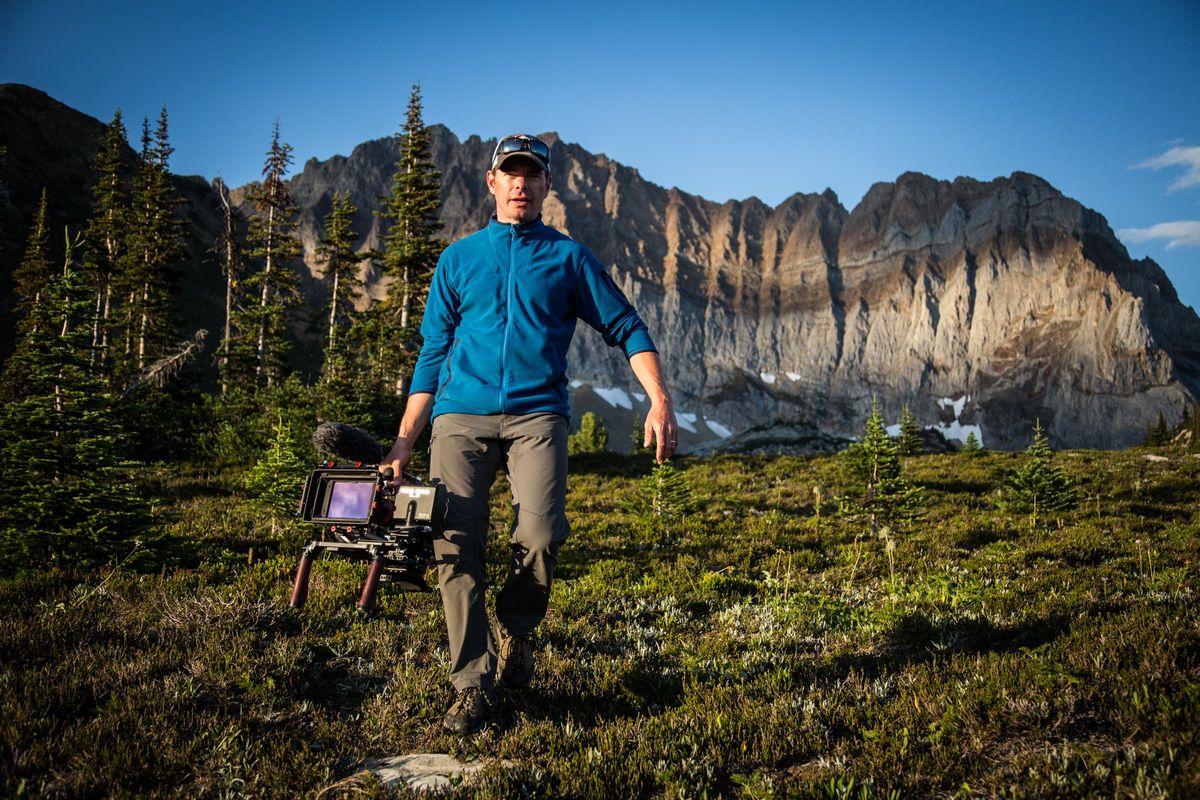Extreme filmmaker Bryan Smith to speak about ‘Capturing the Impossible’ at the FICA

Over the course of his career, extreme filmmaker Bryan Smith has summited some of North America’s highest peaks, explored the deepest canyons in the South Pacific, captured the first ice climb of Niagara Falls and has also worked in Russia and Papua New Guinea.
But it’s unlikely Smith would have gone on those adventures had it not been for his time in Washington state.
Smith, who will present “Nat Geo Live: Capturing the Impossible” at the First Interstate Center for the Arts on Wednesday, grew up in northern Michigan and eventually moved to Washington where he attended the Evergreen State College.
While in college, he began kayaking. After graduating, he moved to Orcas Island and worked as a kayak guide.
After 10 or 12 years in Washington, Smith moved to British Columbia where he became familiar with the Ashlu River, which was due to be dammed.
Smith was attending public meetings about the river and realized the people who were making the decisions about the Ashlu had never seen it before.
He then realized that he could use his kayaking skills to share the river with others.
“It was that combination of wanting to save that river but also realizing ‘Hey I’ve got a unique access tool here to get places people typically don’t see,’ ” he said. “That was where the switch flipped.”
Smith bought a camera from Walmart and began to film kayaking trips.
Smith released his first film, “49 Megawatts,” about the Ashlu River in 2008.
“The nexus of where I started was definitely on the river and it definitely was not at film school and I had no idea what I was doing from a filmmaker’s perspective,” he said. “But I did have that skill of kayaking and being an adventurer and explorer, which is a huge part of the work that I do.”
Smith is often asked questions by audience members who want to do what he does. They usually tell him they have a camera of their own.
But the camera is only half of it, Smith said. Filmmakers also have to be able to make it to wild locales and operate there, be it through something like skiing, climbing or kayaking.
“That skill set’s just as important as being able to operate a camera,” he said.
During his “Nat Geo Live!” talk, Smith will share three journeys with audiences. One involves an ice climbing adventure at Helmcken Falls in Wells Gray Provincial Park in British Columbia.
The second will take audiences to Papua New Guinea, and the third takes place in Alaska.
“My goal always in these shows for National Geographic is to give people that visceral experience of what it’s like to be there, not just sit up there and show pictures and slides,” he said. “That’s a huge part of filmmaking for me is being able to make people feel like they’re on that adventure with us.”
Those adventures, of course, are not without risk, as each trip is unpredictable by nature.
You can do your best to anticipate what a trip will be like, but you can’t, Smith said, plan out what a month-long expedition is going to be like day by day.
“It takes crazy twists and turns and the way you succeed is by being able to problem solve, and I think in some ways enjoy a bit of suffering and a bit of the unknown,” he said. “That’s what we’re there to document. It’s an unknown outcome. You’re not entirely sure if it’s going to work or fail, and you have to enjoy that.”
During his talk, Smith hopes to pass that idea along to audiences, the idea that it’s sometimes necessary to try something that we’re not entirely sure if we can do and learn from the experience no matter the outcome.
Smith also hopes to leave audiences with tips on adventuring with a purpose.
Each adventure, no matter where it takes you, leaves you with an experience. The way Smith sees it, you then have two options.
You can choose to be selfish and say “I had a great time. It was this amazing experience. I took all these beautiful photos. Yay for me.”
Or, you can take that experience and say “I learned a lot about a new place, a new environment, and I want to do something with that.”
That “something” could be anything from sharing your trip with someone else and encouraging them to go there to fighting for that place if it’s experiencing threats of some kind or beginning to plan your next adventure.
For Smith, storytelling became his way to adventure with a purpose. With each film he makes, he hopes that story is useful, be it for an environmental cause or a human cause.
“I like to look at it simply as you had this experience and if it empowers you and you’re passionate about it, you should do something with that,” Smith said. “That’s what I think of adventure with purpose. Take advantage of those experiences, don’t just let that passion from those experiences sit there.”
He’d also like to assure everyone in the audience, from young children to retirees, that adventuring is not just a “young person’s thing” and doesn’t require travel to exotic locales.
“We’re all adventurers and explorers,” Smith said. “I think that’s a really important part of the show is that this isn’t just extreme sports. This is exploration and an ability for anyone in Spokane or wherever people come from, anyone all ages to share in that experience and celebrate our planet and places that we have in our backyard.”